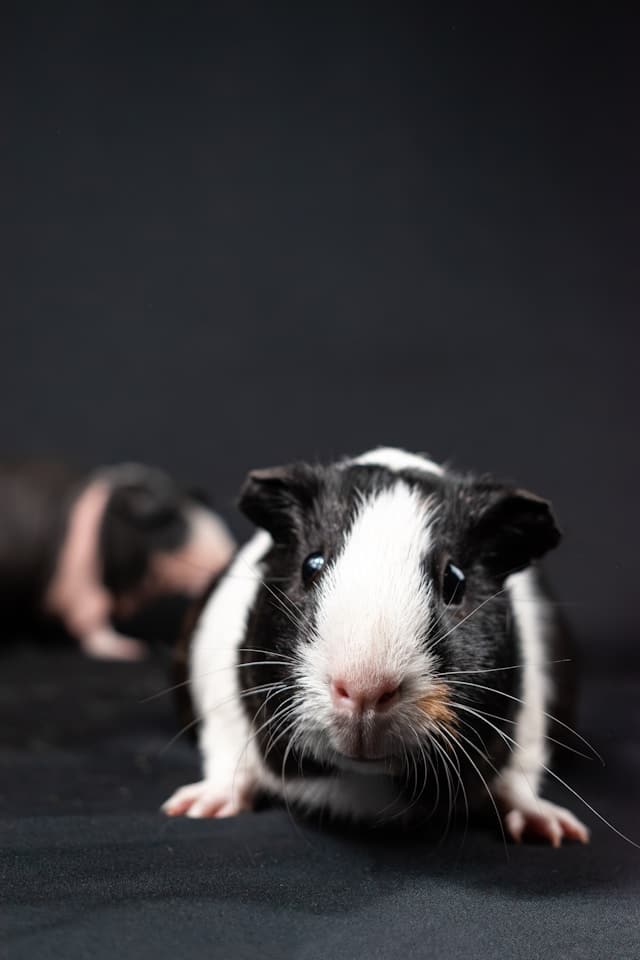How to Encourage Natural Burrowing Behavior in Pet Rats?

Rats are charismatic, intelligent, and sociable animals that have been domesticated as pets in many households. Their natural curiosity and energy make them exciting pets to keep. One such behavior that pet owners often notice is the instinct to burrow. Rats are natural burrowers in the wild, creating an intricate network of tunnels for shelter, food storage, and raising young. This article aims to provide you with insights on how to encourage this natural burrow behavior in your pet rat’s environment.
Understanding Your Pet Rat’s Natural Instincts
To support and nurture your pet rat’s natural instincts, including the impulse to burrow, it’s essential to understand their behavior in the wild. Burrowing is a fundamental aspect of a rat’s survival strategy. This behavior provides them with a safe and secure area away from predators. It also gives them a place to store food, rear their young, and take refuge from harsh weather.
Lire également : What Are the Best Nutritional Plans for a Growing Great Dane Puppy?
When we domesticate rats and keep them in cages, we alter their natural habitat drastically. However, by providing them with a suitable environment and opportunities for burrowing, we can stimulate their natural behaviors and enhance their well-being.
A well-structured cage, adorned with toys, tunnels, and burrow-like areas, goes a long way in satisfying their burrowing instinct. Furthermore, a balanced diet that mimics what they would consume in the wild can contribute positively to their overall health and well-being.
Avez-vous vu cela : How to Design an Interactive Feeding Puzzle for Dogs with Fast Eating Habits?
Providing a Suitable Cage Environment
Creating a comfortable and stimulating environment for your pet rat is vital for their physical and mental well-being. The cage should be spacious, well-ventilated, and secure. It should have multiple levels to give your pet plenty of room to climb and explore.
Inducing an area for burrowing within the cage is a critical aspect of imitating their natural habitat. Using a deep tray filled with safe, non-toxic substrate material, such as shredded paper or aspen shavings, will encourage your pet rat to burrow. Avoid using pine or cedar shavings, as these can be harmful.
Including multiple hiding spots in your rat’s cage can also simulate a burrow-like environment. A box or a small tunnel can serve as a perfect hiding spot.
Using Toys and Enrichment for Stimulation
Using toys and other forms of enrichment is an excellent way to stimulate your pet rat’s burrowing behavior. Rats are intelligent creatures and need mental and physical stimulation to stay happy and healthy.
Tunnels and tubes can mimic the underground burrows of their wild counterparts, thus encouraging their natural instincts. You can use plastic or cardboard tubes that are large enough for your rat to move through comfortably.
For added excitement, you can hide treats or food inside the tunnels. This not only encourages their burrowing behavior but also provides them with an enjoyable and stimulating activity.
Ensuring Proper Nutrition
Like all animals, rats require a balanced diet. Providing your pet rat with a diet that mimics what they would receive in the wild can contribute to their overall health and well-being.
Rats are omnivores, which means they eat a combination of meat and plants. A good rat diet should contain a balance of fruits, vegetables, grains, and protein. Commercial rat pellets often provide a well-balanced diet. However, you can supplement this with fresh fruits and vegetables.
Remember to provide your rat with a constant supply of fresh, clean water. Dehydration can lead to serious health issues.
Regular Interaction and Grooming
Interaction is crucial for the well-being of your pet rat. Spending time with your rat, handling them gently and playing with them can help foster a bond.
Rats groom themselves regularly and are generally clean animals. However, you may need to assist them from time to time. Brushing their fur gently can help remove loose fur and stimulate their skin. Regular checks for any external parasites or skin issues are also necessary to keep them in good health.
Feeding, grooming, and interacting with your pet rats significantly contributes to their overall sense of security and happiness. It provides them with the stimulation they need to exhibit their natural behaviors, including burrowing.
While we can’t emulate the exact conditions of a rat’s natural habitat in our homes, we can do our best to provide an environment that satisfies their natural instincts. This not only keeps our pet rats healthy but also enriches our experience as pet owners. After all, a happy pet is a joy to keep.
The Role of Scent Marking in Rat Behavior
Scent marking is a significant aspect of rat behavior. It aids in communication with other rats, and it is also a way for them to interact with their environment. In the wild, rats will leave scent marks to establish territory or to communicate information about food sources to other rats.
In the context of pet rats, scent marking can take on a different role. Pet rats will scent mark their environment, including their cage and toys, to familiarize themselves with their surroundings. This behavior can be encouraged by creating an environment similar to their natural habitat and including environmental enrichment such as different textures, materials, and smells for them to explore.
To promote scent marking, you can introduce new items to their cage regularly. This could include different bedding materials, toys, or even small amounts of safe, natural scents such as herbs or spices. Remember to clean their cage regularly to maintain hygiene, but avoid over-cleaning as this can remove the scents that your pet rat has marked and cause them stress.
The Importance of Free Range Time for Pet Rats
Just like guinea pigs and other small animals, rats love to explore and need time outside their cage to stretch their hind legs, interact with their environment, and express their natural behaviors. This free-range time is essential for the well-being of your pet rat.
When allowing your rats free range time, make sure the area is safe. Remove any potential hazards and ensure the area is escape-proof. A rat-proofed room, ideally with lots of hiding spots, climbing areas, and toys, would be a good idea.
During this free range time, rats enjoy exploring, scent marking, and interacting. Enrichment for rats during this time could include a dig box filled with safe substrate for them to burrow in, or toys with hidden treats for them to find.
Remember, always supervise your rats during their free range time to ensure their safety and prevent them from getting into trouble.
Conclusion
Caring for pet rats involves more than just providing food and water. It’s about creating an environment that is as close as possible to their natural habitat and encourages their natural behaviors like burrowing, scent marking and exploring. From the design of their cage, the toys and enrichment provided, to their diet and grooming, every aspect plays a crucial role in their health and happiness.
By understanding these behaviors and ensuring they have the means to express them, we can make sure our pet rats live fulfilling lives. Remember, a varied diet, regular interaction, and environmental enrichment are key to their well-being. Regular grooming and health checks will also keep them in the best possible condition.
In return, we get the joy and satisfaction of observing these intelligent and sociable creatures as they express their natural behaviors in our care. Happy pet rats are not just a pleasure to observe – they can become beloved companions that enrich our lives.
